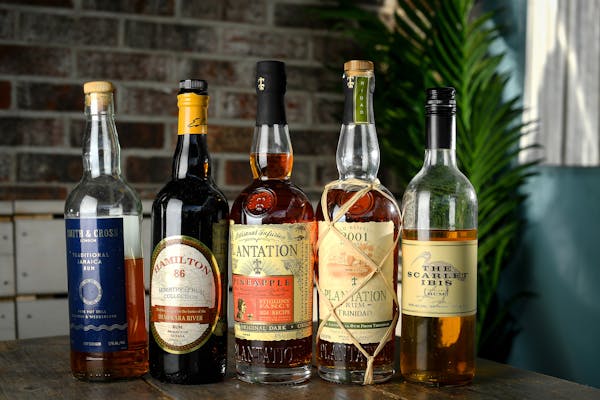Rum can be made from sugar, sugar cane juice or molasses. But the variations don't stop there. Everything from the aging process to fermentation styles can vary, all of which affect the taste.
Here's a quick look at some of the types of rum:
White rum: As the blank canvas of the rums, white is ideal for complicated cocktails because it typically lacks overt flavor, although that's changing.
Gold rum: This amber-hued rum has a bolder flavor, because it's barrel-aged longer than white rum. Also great for rum-forward cocktails.
Dark rum: This dark, rich rum gives a hint of the molasses that it's most often from. (There are demerara sugar versions, as well.) It's also called Navy rum, in a nod to 17th-century Royal Navy ships, on which sailors received a ration of rum.
Spiced rum: Spiced rum has been a popular drink since the 1980s, jazzed up with a variety of spices and flavors meant to reflect rum's tropical origins.
Rhum agricole: A French Caribbean Islands-style rum that's made with sugar cane juice instead of the traditional molasses.
Cachaça: Brazil's national spirit, a sugar cane rum with hints of grass and apple. Best known for its use in the popular cocktail, çaipirinha.
Aged rum: This top-of-the-class rum is meant to be enjoyed on its own — on the rocks or neat — just like an aged whiskey.
Amelia Rayno
Singing, ceremonies and straw hats: Olympics opening ceremony in Tahiti centers Polynesian culture

Three 101-year-old friends recall fond memories in 1940s Alexandria
Celine Dion makes musical comeback at Paris Olympics with Eiffel Tower serenade

